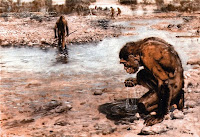 The investigation, appraisal, monitoring and management of cultural heritage requires quantifiable data not only of features that are extant but also of those features that cannot be seen today above ground or above the sea. Modern analytical methods provided by geophysics and geochemistry are providing the crucial data required by the archaeological and heritage community to unravel the traces left by our ancestors. The land and marine work conducted by Dr Bates, of the Department of Earth & Environmental Sciences, while in the hydrocarbon and mining industry has provided a platform for the cross-pollination and development of new methods for ultra-high resolution investigation. For example, research on the submerged Neolithic remains around World Heritage sites in Orkney revealed a lost world (Drowned Landscapes, part of The Royal Society Summer Science Exhibition in 2012) and hitherto unknown new sites at Stonehenge (Stonehenge Underground, part of The Royal Society Summer Science Exhibition 2015).
The investigation, appraisal, monitoring and management of cultural heritage requires quantifiable data not only of features that are extant but also of those features that cannot be seen today above ground or above the sea. Modern analytical methods provided by geophysics and geochemistry are providing the crucial data required by the archaeological and heritage community to unravel the traces left by our ancestors. The land and marine work conducted by Dr Bates, of the Department of Earth & Environmental Sciences, while in the hydrocarbon and mining industry has provided a platform for the cross-pollination and development of new methods for ultra-high resolution investigation. For example, research on the submerged Neolithic remains around World Heritage sites in Orkney revealed a lost world (Drowned Landscapes, part of The Royal Society Summer Science Exhibition in 2012) and hitherto unknown new sites at Stonehenge (Stonehenge Underground, part of The Royal Society Summer Science Exhibition 2015).
The Royal Society video revealing a facsinating
landscape of monuments beneath Stonhenge
landscape of monuments beneath Stonhenge
In Jersey, wide-area survey of the flooded English Channel is used to reconstruct the pathways of ancestors as they hunted the now long-gone game (Ice Age Island museum exhibit).
 |
| Happisburgh footprints |
 |
| Happisburgh site |
At sea the new marine methods are revealing hitherto unknown sites left by our ancestors and causing a re-thinking of human response to climate change. While developments continue, many have now become standard practice and adopted by agencies such as Historic England, Historic Environment Scotland, as best practice following guidance (Marine Geophysics Data Acquisition, Processing and Interpretation: Guidance Notes).